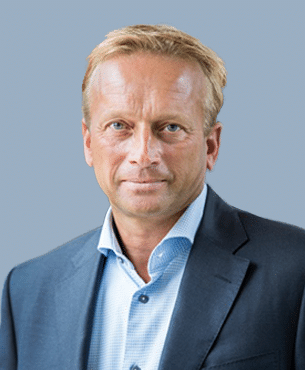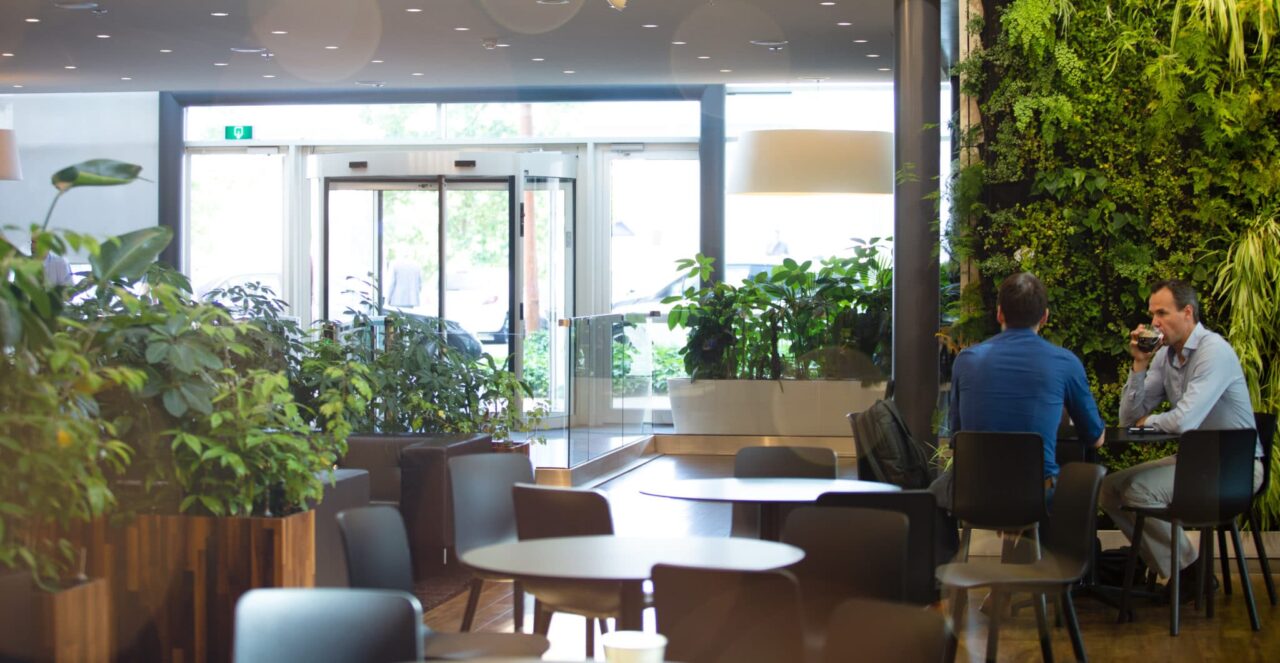Q&A with Liberty Global CTO Enrique Rodriguez.
As the demand for high-speed internet continues to grow, advancements in internet technology are crucial in meeting the pressing needs of consumers and businesses in our digital society. Paving the way to next generation connectivity across our Liberty Global footprint are two innovative technologies: DOCSIS 4 and fibre, which both offer seamless, reliable and fastest network speeds.
Our broadband networks serve over 31 million homes in six markets, all of which will reach 10 gigabit speeds over the next few years, either through upgrades to fibre-to-the-home (FTTH) or by using a combination of FTTH, DOCSIS and hybrid-fibre, based on the geography and infrastructure in each area.
In a keynote Q&A session with New Street Research in late March, Liberty Global Chief Technology Officer Enrique Rodriguez discussed the latest developments in DOCSIS 4 and fibre, including their ability to offer faster download and upload speeds, how these technologies are integrating into the group’s operating companies, and why they are key to revolutionising the way we use the internet.
*This interview has been edited and condensed. Watch the full conversation here.
New Street Research: You’ve been deploying a lot of DOCSIS 3.1 across your networks – can you talk about how you’ve seen the DOCSIS technology evolve and when you could see the newest speed start to go live across the network?
Rodriguez: 100 percent of our network is 3.1 enabled by now – across our complete footprint, about 65 percent is enabled on the upstream and 100 percent is enabled on the downstream. Now that doesn’t mean every customer has a DOCSIS 3.1 enabled gateway (aka broadband router), but we’re continuing to increase the penetration of the 3.1 enabled gateway. This is fantastic, not only to provide better service to the end consumer but also to make better utilisation of our network.
We’ve also talked publicly about 2GB in the UK, which we’re conducting trials on. The speed is more like 2.5 GB per second on the downstream and at least 1 GB per second on the upstream. This is enabled through our new gateways, which we have started deploying first in the UK, and now we’re starting to continue on in other markets.
The beautiful thing about the 2.5 GB network upgrade is that it requires very little upgrade from a network point-of-view. Most of the cost is in the CPE (Customer Premises Equipment) side. It’s an ideal kind of upgrade because you’re mostly spending money on customers that want to get the new service as opposed to some other upgrades where you have to spend the money for everybody first, then gradually start servicing customers. We haven’t made decisions on when it will be commercially available, but we’ve shown in our trials that the technology is quite ready. Then we’ll be deploying this as aggressively as we can to compete in every marketplace.
New Street Research: How much do factors like geography, consumer demand, existing infrastructure or a competitive landscape affect DOCSIS 4 deployment?
Rodriguez: Deployment is driven by a number of things. In basically every country we operate in, we have either some access or full access to fibre, so that takes some of the pressure off in the short-term in highly competitive areas. Frankly, everywhere except the Netherlands, which I’m sure will come soon, we’ve been quite public about how we intend to roll out fibre, or how we intend to use fibre in some combination. The best example is the UK, where we are quite clear on what we’re going to do with respect to 5G rollout and this takes the pressure off of our DOCSIS 4 deployment.
Internally, we think less of DOCSIS progress as big steps – what we really focus on, just like we did with 3.0 and 3.1, is how do we go from 10 MB per second up to 100 to 500 up to 1 GB. That’s our focus much more than it is about whether it’s 3.1 or 4. In some countries, there’s a clear roadmap to 10 GB and we’ll rely on DOCSIS 4. If I look at some US companies, they seem to be a little more in a hurry than we are in getting there and I’m sure that their conditions are different and are probably warranted. In our case, I expect that we will be capable of providing a service by the end of 2024, mid-2025. We continue to watch our performance against the competition. But I want to be super clear: we will deploy DOCSIS 4 and DOCSIS 4 is a very important technology for us.
New Street Research: This touches on the crux of the debate – if DOCSIS 4 is the path forward and it can do what it advertises, why are you still switching to fibre? What’s driving the decision to press on with FTTH overlay in the UK?
Rodriguez: The situation is a lot more subtle – both in terms of our network, as well as our competitors, which dictate what options we look at and ultimately what choices we make. We’ve made no decisions on how we will deploy fibre, and this situation isn’t black and white.
The UK is an example: the fantastic situation that we found ourselves in with our existing network, the way it was constructed, allowed us to make an upgrade to fibre in a pretty cost-effective way. Our public numbers on fibre [costs] are at least three times, if not four times better than our closest competitor in their ability to build new fibre. This gave us a great opportunity in a very cost-effective way to construct and roll out fibre aggressively. I’m not aware of anybody deploying that much fibre that quickly.
So in the UK, you have this interesting dynamic where we have the ability to continue building new homes with fibre, upgrading our network in a pretty cost effective way. In Ireland, we are upgrading pretty much all our network to full fibre paths within the next two years, with a rollout that continues to be executed fantastically. But in the case of Belgium, there’s a mix. There are areas where we may deploy new fibre, share fibre access with others, or we’re going to operate DOCSIS 4. And I expect that DOCSIS will arrive in the Netherlands and I’m sure the plans will include some aspects of fibre and some aspects of DOCSIS.
That’s what’s unique about us. We’re quite pragmatic, and we don’t necessarily need to take a binary decision on whether we’re in the DOCSIS camp or the fibre camp. I don’t think about it that way, it’d be like comparing my left side to my right side. We’re looking at the specific situation of the network, and even in some cases there are multiple answers within a single country.
New Street Research: Can we build on this debate and talk about the operating costs to run a fibre network versus deploying DOCSIS 4?
Rodriguez: There’s no question that a fibre network has a lower operating cost than an HFC network. There are multiple aspects to this and as soon as you try to quantify things, you’ll start another debate because it all depends on how you count things. But at a fundamental level, the fact that a fibre network is a passive network and is by nature a more modern network than HFC, all of these elements lead to a lower operating cost. And those operating costs can be quite significant – if you look at certain parts of the operation, that can be 50 percent or more, and that’s only a portion of the operating cost of a company like ours.
And the final point to make is that these HFC networks have been built over decades, which means that there’s ongoing maintenance in just about every OpCo. Fibre networks, because they are newer, naturally require less of this maintenance.
New Street Research: Liberty Global has been linked in the press to looking at potentially buying a number of alternative carriers to meet your network build, instead of building organically. What is your perspective as CTO? How easy is it to integrate any of these acquisitions if they were to get ahead with your network compared to building organically? What’s needed to reach your build out targets?
Rodriguez: I don’t think there’s any group in this industry that has more experience in acquiring, integrating and, in some cases, selling networks either on a national level or a regional level. We’re comfortable with being able to gauge what it takes to integrate along with how to be pragmatic about integration. If you look at the way we integrate, we’ll take a segment-by-segment approach. The best recent example is what we’ve done in Switzerland, where in a short period of time – less than two years – we not only integrated operations and the management team but we did a fantastic job integrating some of the branding and the market aspects. We’re not afraid of integration and, at the same time, we’re not afraid to build and upgrade. We’re demonstrating all three right now.
We’re not standing still, we’re continuously improving our build machine. We’re very comfortable with reaching goals that we’ve stated publicly and by getting there organically. Having said that, if the right opportunity comes up – both from a financial perspective and from a technical perspective – we can consider M&A, which we’ve been an active participant in throughout the history of our company.
But my job and the job of our OpCos is to make sure we can meet our commitments organically. The UK is no exception to that – our VMO2 team is fantastic and they’ve demonstrated our building strategy with high quality and low costs. They’ll be able to scale the build machine to meet our commitments.










